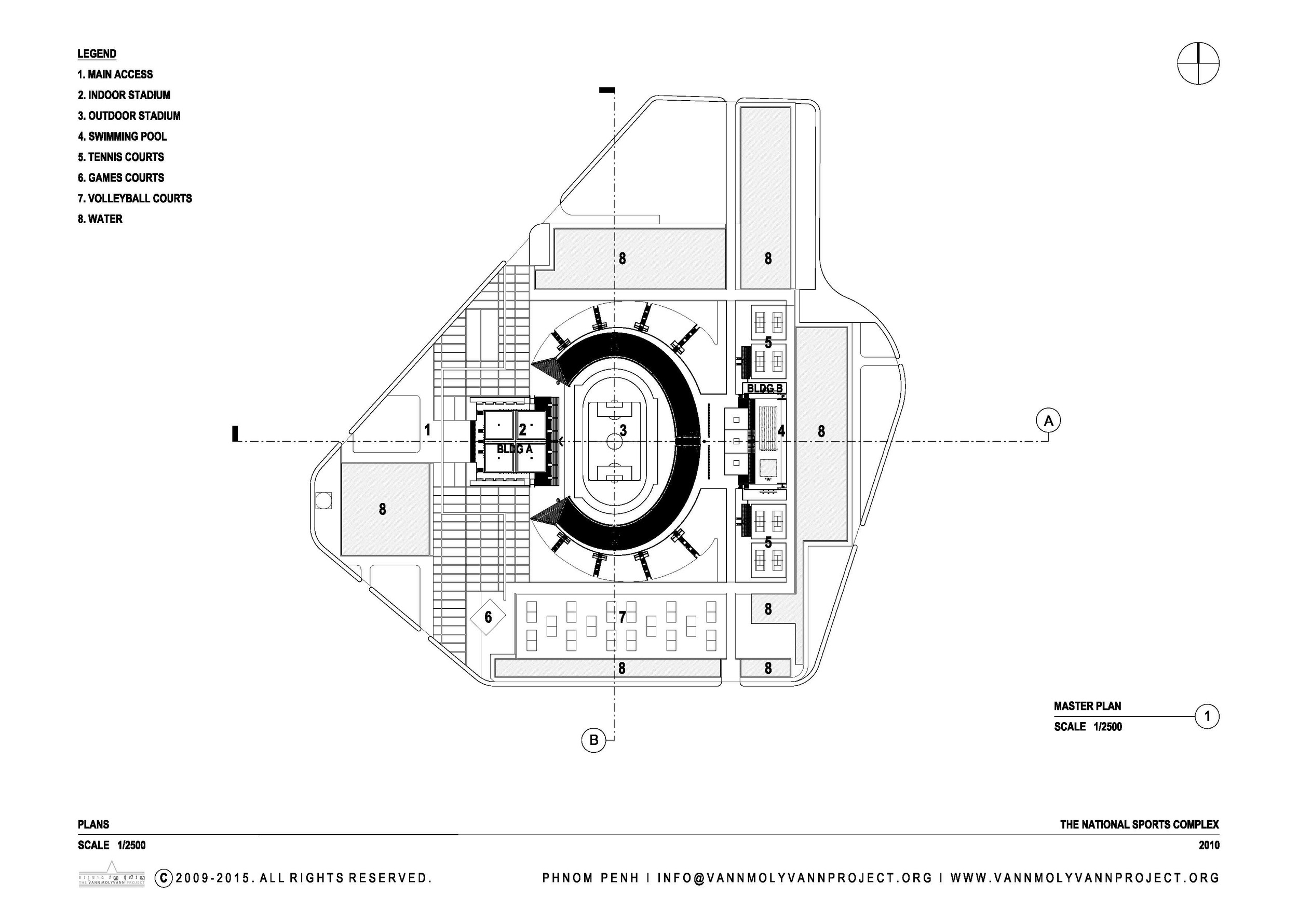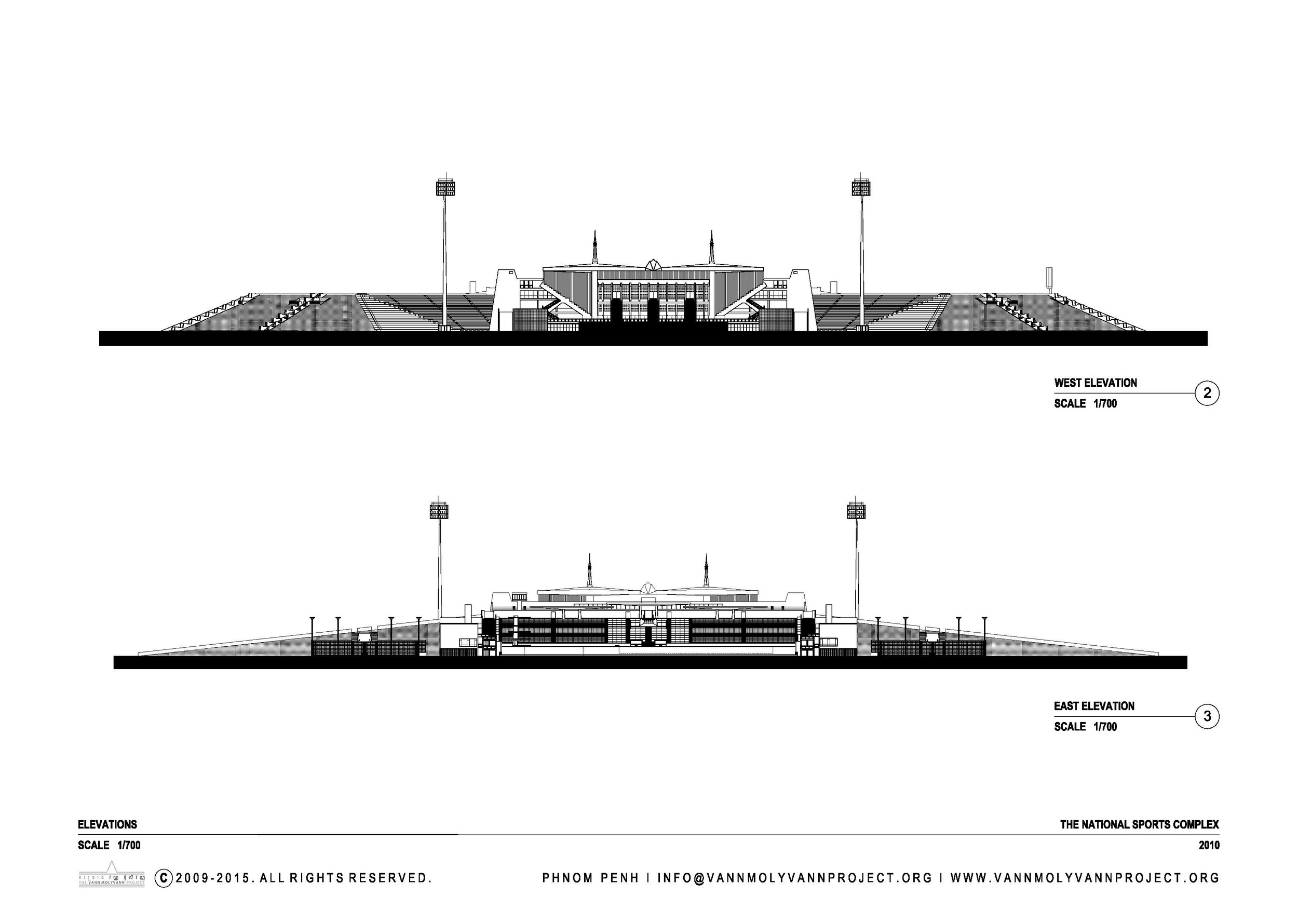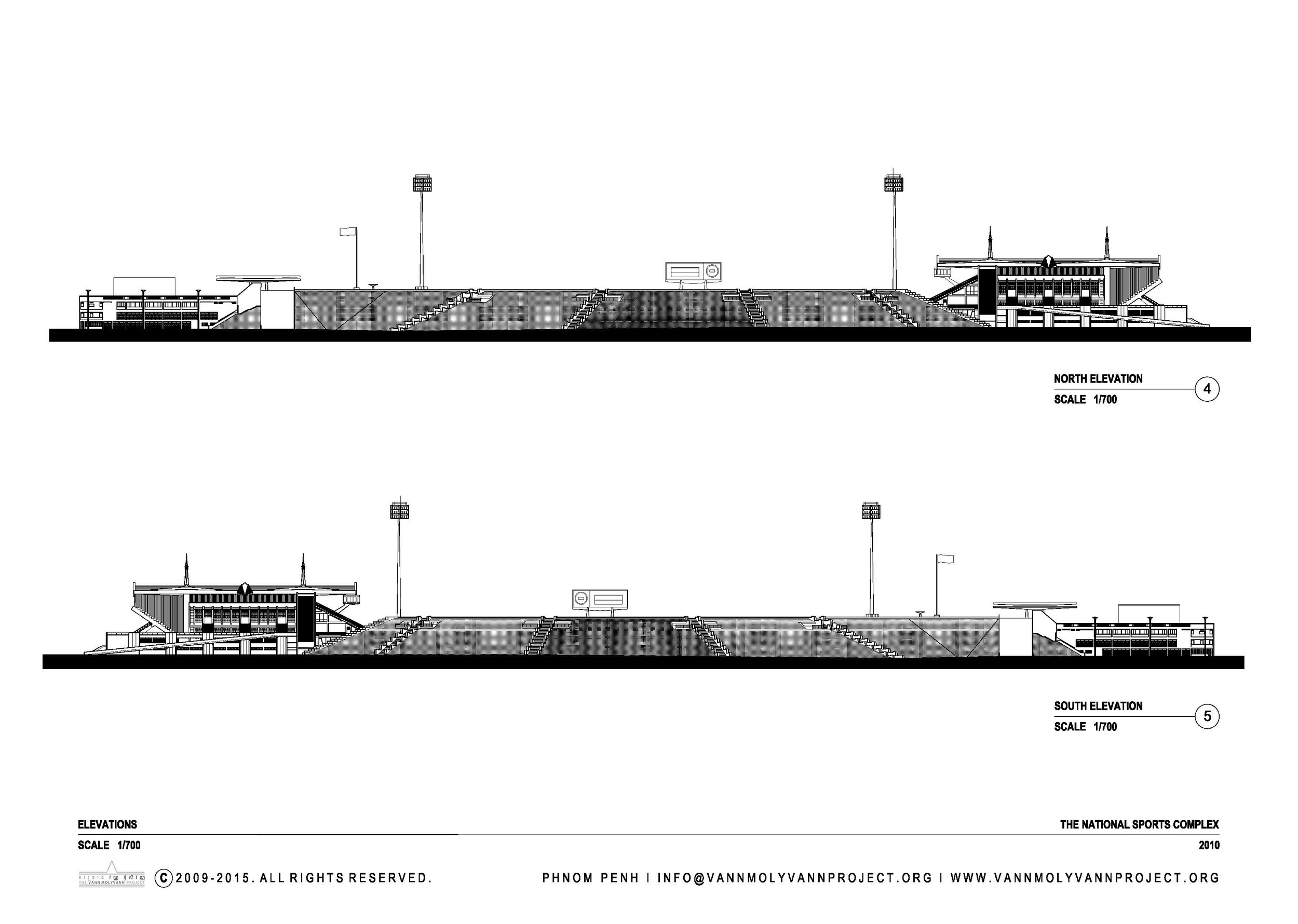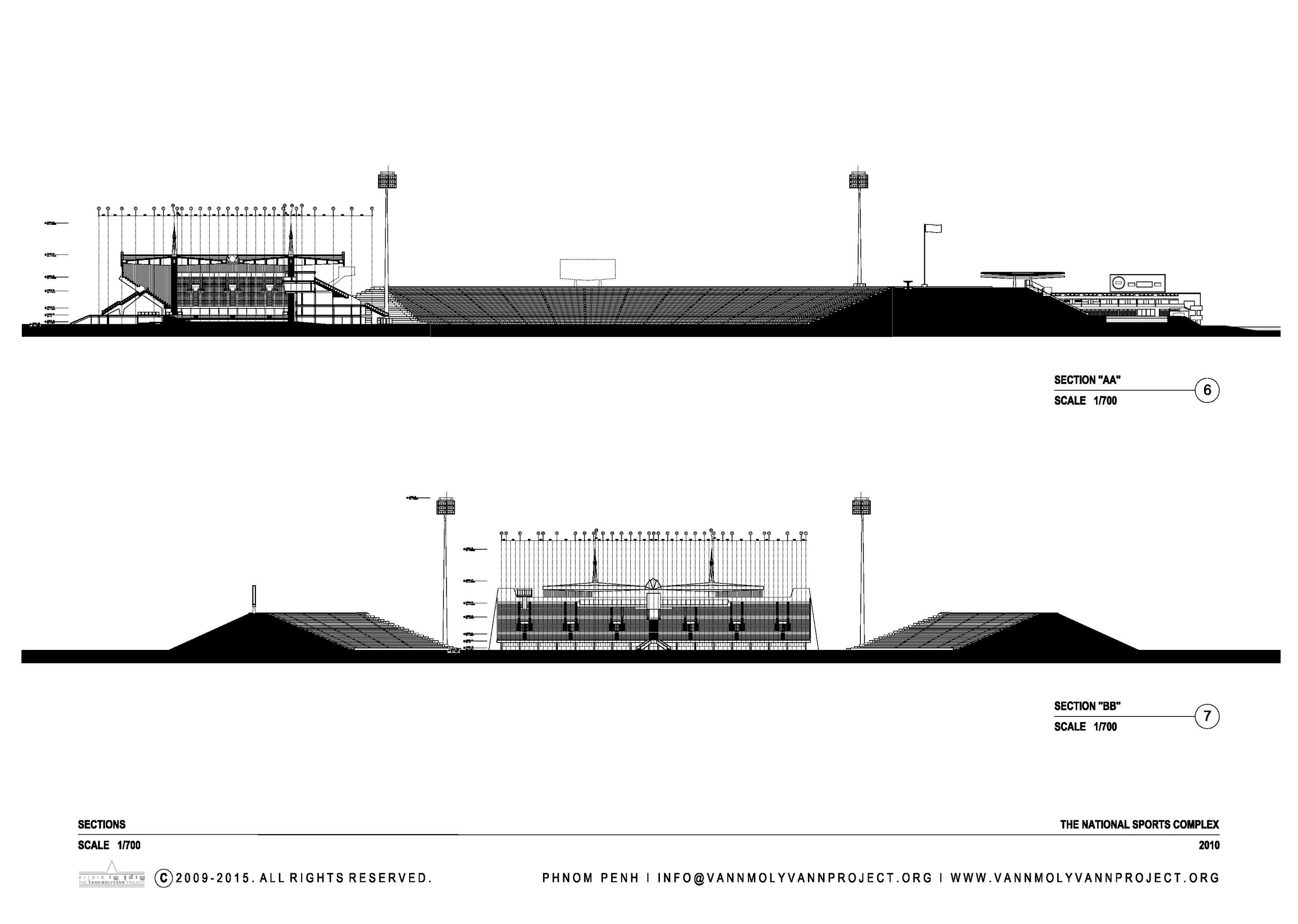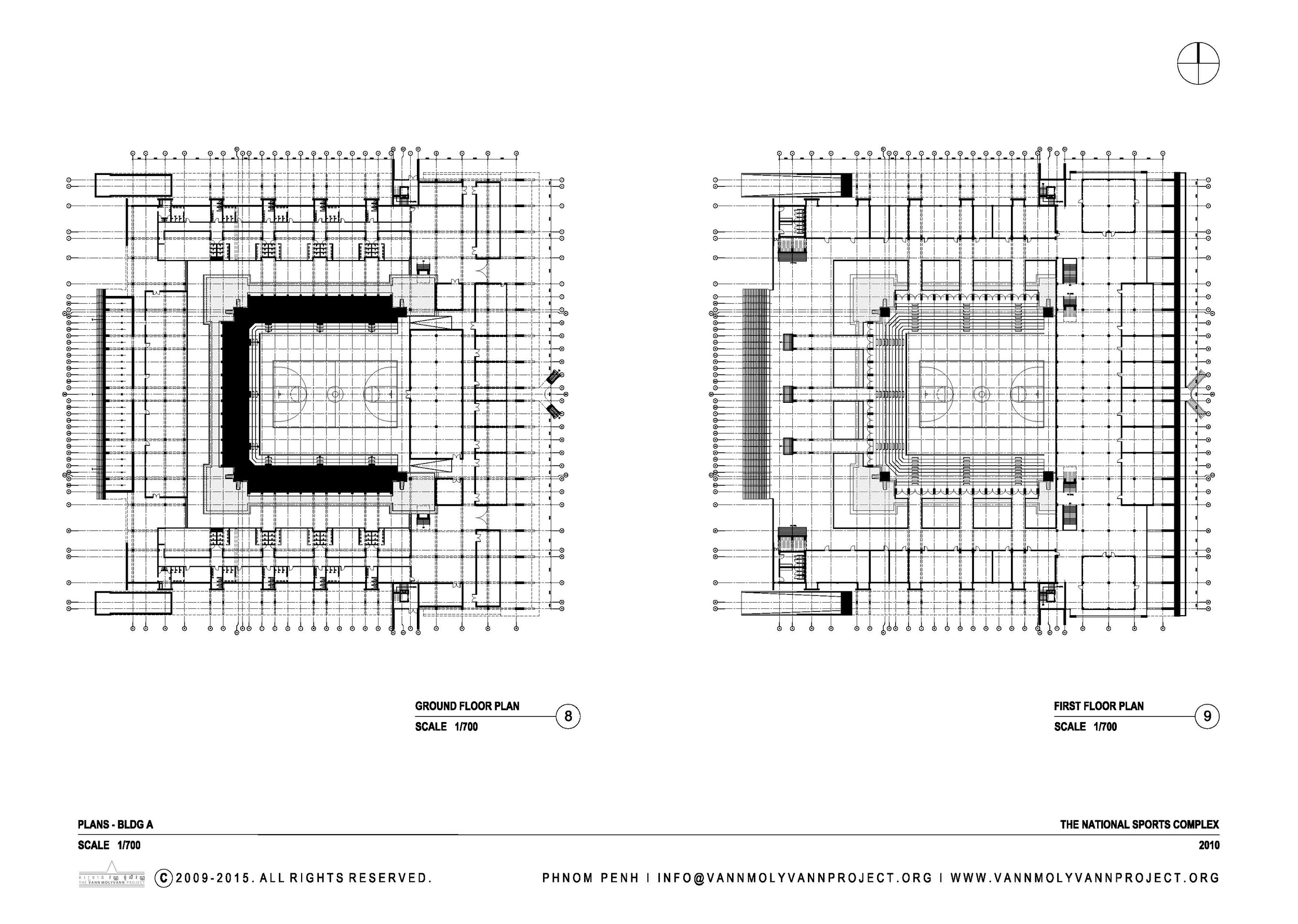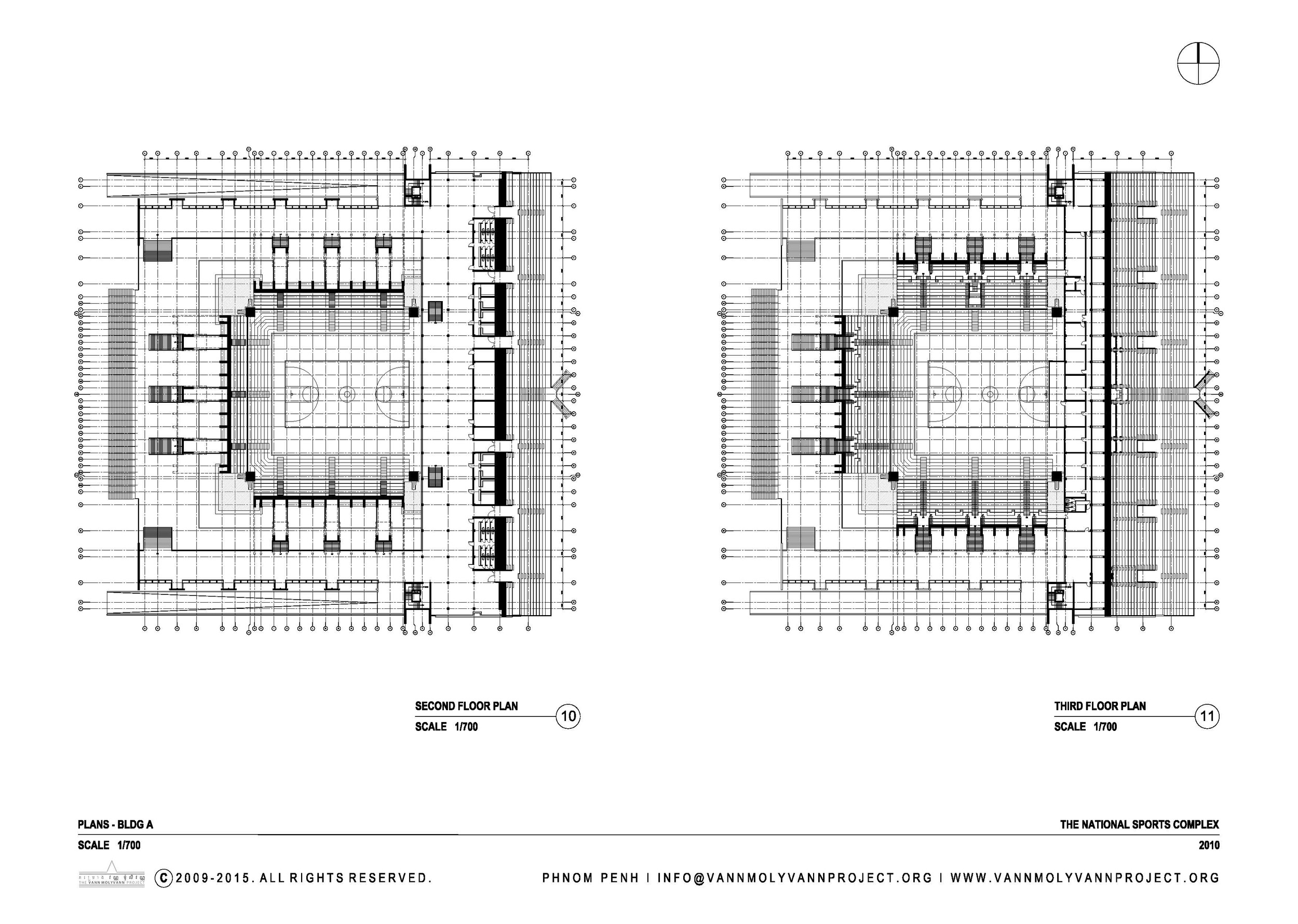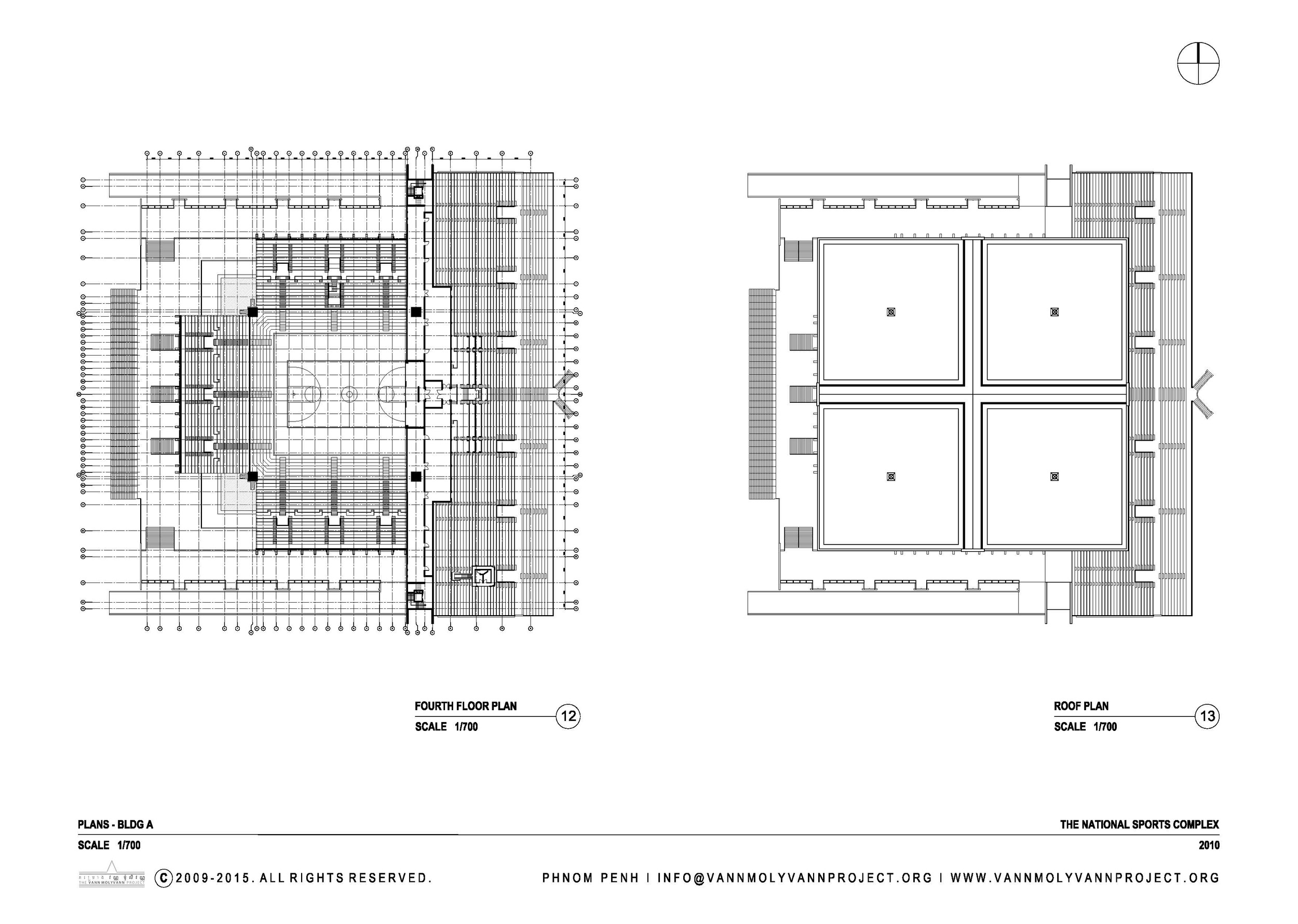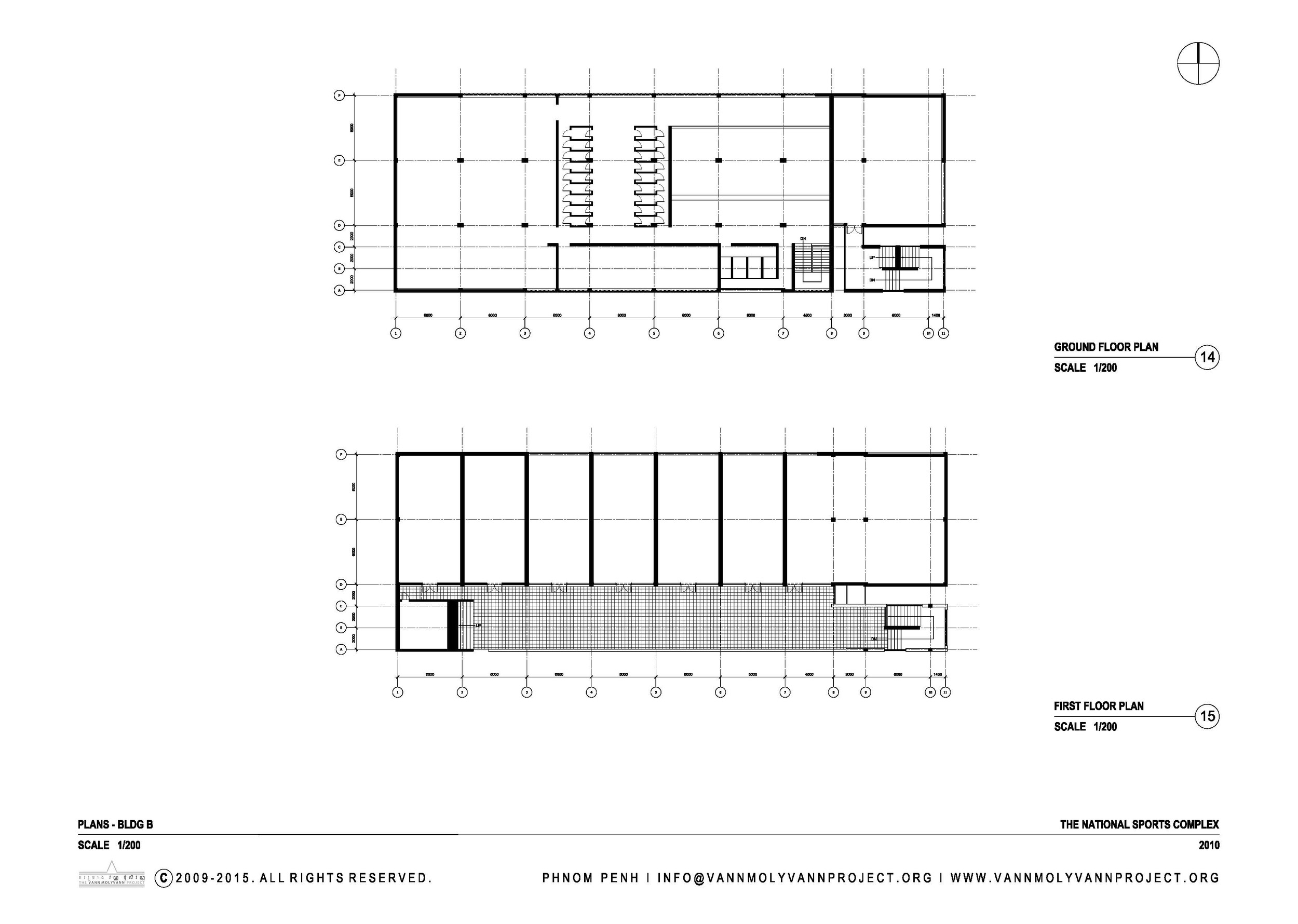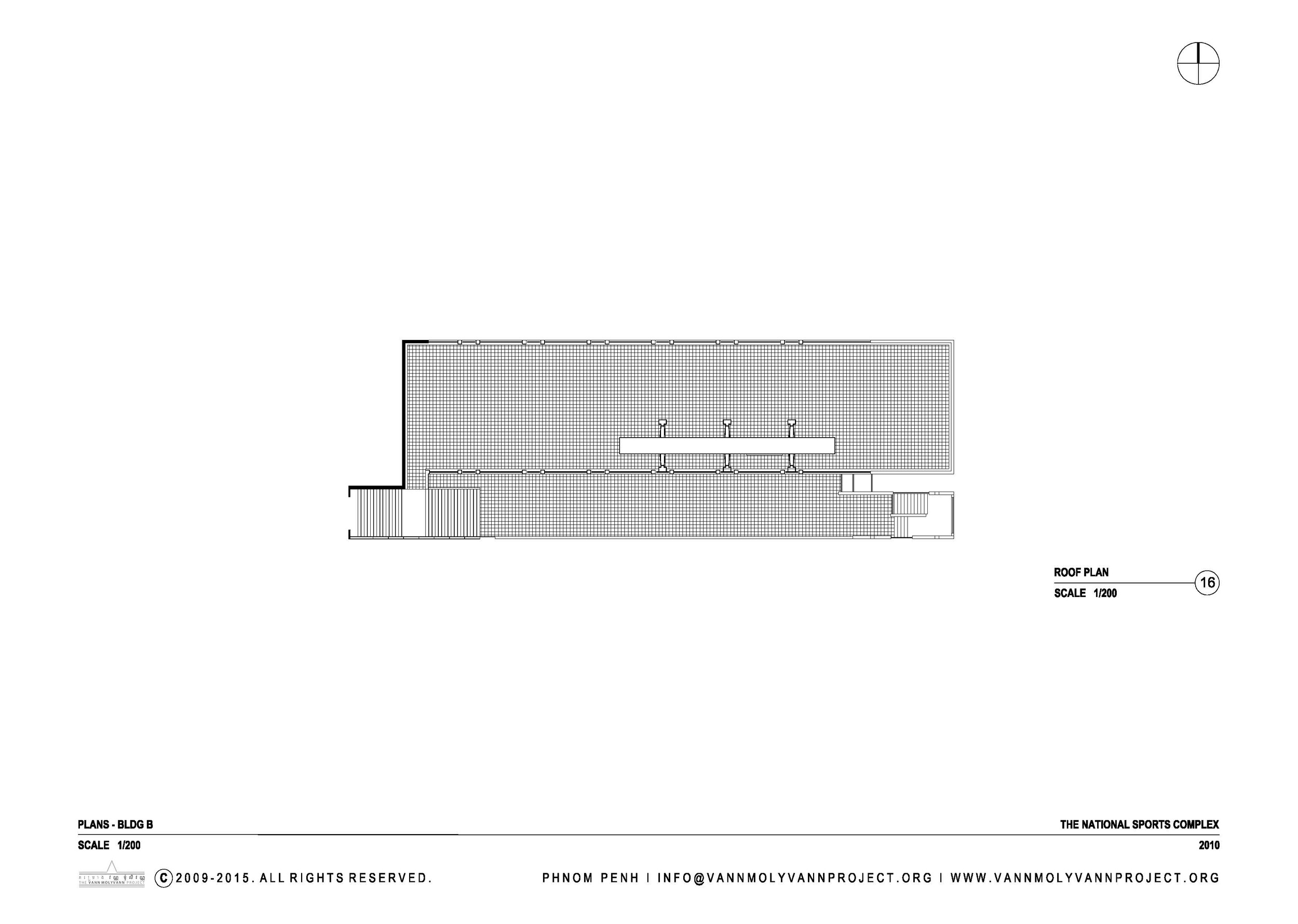The National Sports Complex
A Vann Molyvann-led team of international architects and engineers designed the Complex and hurried it into construction in 1962, anticipating Cambodia’s hosting of the 1963 Southeast Asian Games. The Games never came to fruition, overshadowed by Jakarta’s GANEFO Games of the same year, and the National Sports Complex was instead completed a year later in 1964. International publications praised its architectural achievements.
The Complex spreads out across a 300 000 m2 parcel to the west of central Phnom Penh, formerly a racetrack. Its site plan presents an Angkorian study in the manipulation of water and earth. At the center, a massive birm forms an outdoor arena with seating for up to 70 000 amidst a landscape of canals and barays formed by soil displaced in its construction.
To the west of the arena, an indoor stadium is sheltered under 4 overhanging flat roofs, each supported and drained by a single column at their center. Giant scuppers at the base of each column feed a moat, which in turn cools the seating above. Holes punched beneath the stadium’s seats turn three of its walls into light screens, making for soft lighting and cross-ventilation. Interlocking aluminum panels screen the otherwise exposed corners.
On top of the eastern side of the arena, three overhanging concrete roofs echo the roofs of the Indoor Stadium across the arena and provide shade for the Swimming Complex erected on the birm’s eastern slope.
The National Sports Complex would host the 1966 GANEFO Games, foreign leaders, and cultural spectacles.

